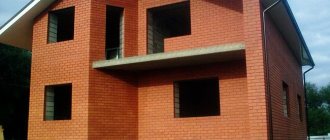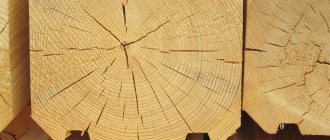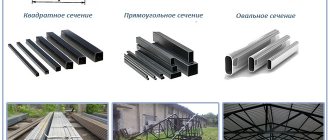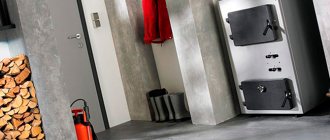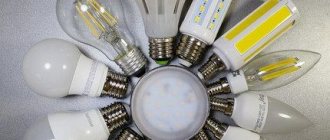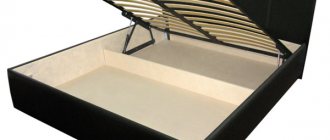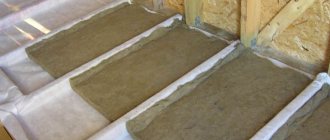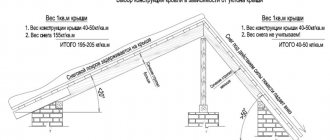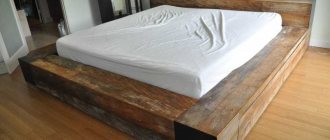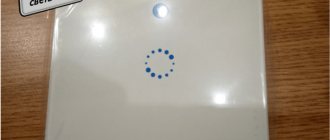2019-01-24
Author: Belfan
Issues discussed in the material:
- What is a bed base?
- Which bed base is better to choose?
- Which base is best for a children's bed?
- How to choose a good bed base?
Such a familiar piece of furniture as a bed is a carefully thought-out structure consisting of several important elements: a frame, a base and a mattress. The base is most often attached to the bed frame, but can be supplied separately. All structural components play their role in providing reliable support for a sleeping person. Let's figure out which bed base is better and why.
Pros and cons of making a bed
As mentioned above, sleeping space is very expensive. The more attractive and better quality it is, the higher the price rises. Cheap copies will last a short service life. Over time, they can not only lose their beauty, but simply fall apart.
A good bed is overpriced, and cheaper ones are inferior in quality. In this case, you can assemble a bed from chipboard with your own hands.
Making a bed yourself from chipboard will not only help you save money. A person will not be limited in the design and shape of the product, the main thing is that it fits the parameters of the chosen mattress.
The cost of a fully made bed will be much less than in the store.
Advantages of a seat made from chipboard:
- It is enough to buy accessories and materials, and their cost is quite low;
- there is no need for specific tools or special skills, manufacturing is quite accessible to anyone;
- a drawing of a bed made of chipboard can be easily found on the Internet;
- such material is not interesting to various insects;
- there are no flaws on its surface;
- resistance to mechanical damage;
- will not begin to delaminate or dry out;
- the opportunity to receive a unique item without overpayments;
- the product will fit perfectly into the interior of the room;
- reliability and high quality.
The material is selected independently, this will allow you to choose inexpensive parts.
In addition to the advantages, there are several disadvantages:
- low resistance to high humidity;
- with constant installation and dismantling, the product may begin to deform;
- not exactly an attractive appearance.
The last minus can be easily corrected if you make and hang beautiful decor on the bed. In principle, the independent process of manufacturing a structure is not particularly complicated. Anyone can handle it if they follow the instructions.
The project turns out to be completely individual, tailored to personal characteristics and habits.
Required Tools
Most of the required tools are usually already present in every man’s home. Of these you will need:
- Screwdriver
- Tape measure and pencil
- Screwdriver (bit) for confirmations
- Iron for gluing veneer
To save time, it is better to purchase laminated material for furniture.
That's all, a do-it-yourself chipboard bed is ready, without any special difficulties.
You also cannot do without additional fasteners and some accessories:
- Metal corners
- Confirmations and stubs
- Screws
- Veneer for decorating ends.
Most of the required tools are usually already present in every man’s home.
Now that everything you need has been purchased and cut, you can begin assembly.
To understand how to make a bed from chipboard with your own hands, you need to have certain skills in sawing from chipboard.
How to make a bed from chipboard with your own hands
The sleeping place is a rather large specimen. At the same time, it is quite possible to assemble it. Especially if you already have skills in making sofas or cabinets. If they are not there, then do not despair. Drawings taken from the Internet will help in the process.
The main thing is to find time to design a drawing and assemble the bed.
The most expensive part of the product is the mattress. It is best to buy it ready-made, without saving on cost. After all, it depends on him how good the sleep will be. Considering that you still have to purchase furniture yourself, what prevents you from making it from your own parts.
Before we get to work, we need to carefully consider the design of a bed made of chipboard with our own hands.
Design selection
Before you start purchasing material, you need to decide on the appearance and design of the bed. According to qualifications, it is divided into one-and-a-half, single and double. The support can be directly from the headboard or backrest. The device is installed on legs or a frame. In addition, there are models with special additional drawers designed for storing bed linen, two-tiered or with an original shape.
The length is not difficult to determine; you need to add 15-20 cm to the height of the person who will use the bedroom furniture.
The product can be easily shortened or lengthened based on the height of the person for whom it is made. External parameters are selected relative to the area of the room. Most often, installation occurs close to the wall so that access to the passage remains.
Married couples should consider larger sizes; children love to come to their parents' bed.
The dimensions of the device depend on the parameters of the mattress:
- the most optimal width for a child is sixty centimeters, for an adult – eighty;
- the length of the mattress should be fifteen centimeters greater than the person’s height;
- the thickness is based on the total mass of people sleeping on it.
To make it convenient to tuck the bedroom furniture, you need to leave about one and a half centimeters on each side.
People whose height is two meters or more must order a mattress. The option of making a bed yourself significantly saves the family budget. The mattress should fit tightly into the structure, with a gap of half a centimeter should be left on each side for comfortable tucking of linen.
Sometimes the size of the bed is determined by the available mattress. Here we will choose a material that is 50mm larger in length and width than the mattress.
Necessary materials
You can actually do the drawing yourself. A standard diagram from the Internet will be an excellent basis. An option that has already been made by someone is also suitable, in which it is enough to put down your measurements.
The main part of the furniture will be made primarily from chipboard. This is an inexpensive and durable particle board.
To make a simple standard stock, you will need the following materials:
- For the front parts, laminated chipboard sheets from sixteen to twenty-five millimeters thick - legs, sides, back. The headboard is the highest part; it can be figured or in the form of a standard rectangle. The side parts must be completely identical in size. The footboard is usually the same height or slightly higher.
- Boards twenty millimeters thick - for crossbars in the amount of three pieces, intended for a mattress with a frame.
- Plywood sheet - for the bottom on which the mattress is placed.
- Timber with parameters thirty by thirty - the manufacture of a frame frame to which the bottom, transverse (three pieces) and longitudinal (two pieces) parts are fixed.
I recommend performing the assembly using Euro screws with plugs, the color of which is identical to the chipboard. This option is the most reliable and durable.
To find out how thick the material will be, you need to start from the total weight acting on the bed.
Required Tools
If the product will rest on the body and not have legs, then it is recommended to install plastic legs closer to the back, the height of which can be adjusted. With their help, the sleeping place can be set in the correct horizontal position, especially if there is an uneven floor. In addition, they will provide excellent protection against mechanical damage (for example, scratches).
To make the assembly process a positive experience, you can involve the whole family in it.
Tools you will need:
- jigsaw;
- drill with various drill bits;
- hacksaw;
- other based on the characteristics of the device.
Double furniture thrust bearings, three pieces for each support that is in contact with the floor, will be useful.
Most of the required tools and materials are usually already present in every man’s home.
Manufacturing process
The first step is to process the edge of the material and cut it. It is better to entrust these processes to professionals and order them from production. If a person decides to do everything completely on his own, then he will need an iron and a melamine edge.
You can provide a drawing of a bed made of chipboard, the dimensions of the part and the material itself to specialists, they will make cutting and edging quickly and efficiently.
The iron should be turned on at about three-quarters of its power, the edge should be applied to the open cut, and ironed. If the edges protrude beyond the slab, then the excess is cut off using a construction knife. Next, the parts are marked, laid out, holes are drilled for Euro screws, and the thrust bearings or legs are fixed.
Assembling a standard bed with a bottom consists of the following steps:
- Assemble a frame from timber; three transverse ones are used to fasten two longitudinal ones.
- Cover the resulting device with fiberboard on top.
- Attach the laminated chipboard side panels to the longitudinal beams.
- Secure the headboard and backrests to the sides (fixation should be done in two places, a distance of about three centimeters from the bottom and top edges).
Place a lattice of slats along the entire length on the bars and support beam, maintaining equal intervals.
The quantity depends on the width of the slats and spaces. If the bed does not have a bottom, but there is a frame mattress, then the assembly sequence changes slightly:
- Between the sides, fasten two transverse ones as close to the edges as possible and one in the center. They should be located on a wide surface, perpendicular to the floor. Fixation occurs in two places.
- Attach the footboard and headboard to the sides.
This design is perfect for an ordinary mattress if you place the lattice mattress pad on supports. It can be easily found in a store if the stock has standard parameters.
If desired, the boards can be replaced with a solid board under the mattress.
The height to which the mattress rises from the floor can be adjusted as desired. The depth should be sufficient so that it is fixed as tightly as possible. Also, the mattress should be slightly higher than the sides of the bed.
Bed decor
As decoration for the product, you can use MDF overlays in contrasting shades, each thickness is approximately ten millimeters. They should be secured to the headboard itself, as well as to the footboard. The size of the decoration is sixteen centimeters smaller than the parameters of the footboard. The space between the elements is eight centimeters from each side. Fixation occurs with the help of screws, their length is only a couple of millimeters less than the total thickness of MDF and chipboard.
That's all, a do-it-yourself chipboard bed is ready, without any special difficulties.
The overlays can also be made of plywood, covered with thin foam rubber or fabric. They must be fastened immediately before assembling the structure.
Design
Hanging bed - an unusual design solution in the bedroom interior
Any bed, regardless of shape and configuration, consists of the following components:
- Frame
- Base
- Side and support panels
- Optional design elements (legs, hanging backrests, headboard, storage drawers, lifting mechanism)
A home-made sleeping place usually consists of a frame on which a base is installed - a mattress support. The supporting structure is made from:
- wooden slats (slats)
- metal mesh
- spring mechanism
Furniture for sleeping and relaxation can:
- have legs (most often no more than 20 cm high)
- be floor-standing (the frame is located directly on the floor)
- be suspended (fixed to the ceiling)
Original headboard for bed
The headboard is a decorative element that:
- carved from wood
- sawn from chipboard
- forged from metal
- upholstered with foam rubber and fabric
- can be carved and solid, straight and curved
In addition to the main functionality - a place to rest, the bed also serves as:
- closet
- stand
- sofa
- podium
In these cases, the mattress is hidden in the shell of the body during the day, and at night it is unfolded using a “book” mechanism or a gas lift.
Where can I put it?
Incorrect placement of a sleeping place can lead not only to poor sleep, but also to worsen your well-being, cause bad mood and migraines. It is worth listening to some tips to ensure the correct installation of the product.
In order for the bed to meet your requirements, and its price to be minimal, you need to limit yourself only to your own efforts.
When the door is located opposite the window, a draft begins to circulate in the room. This option is categorically unacceptable. Do not place the bed with its back to the window, opposite a mirror or in a corner. The best option is diagonally to the door. It should be close to the wall, with the head facing east or north.
Despite the rules of Feng Shui, it is best to place the device in a niche, if of course there is one. Thanks to this, a person will receive a feeling of protection, security, comfort and coziness. Being near a window will bring some inconvenience: bright sun rays, noise from the street, etc. Negativity can be softened with thick curtains.
The material for furniture should be easy to process and have an affordable price.
Poor places include walking through or near a door. In this case, you won’t be able to relax, because the bustle of everyday life will constantly interfere. The optimal temperature is not maintained near the radiator, and near the window there is a risk of catching a cold due to drafts. If the wall borders the kitchen or bathroom, this option will also not lead to a comfortable stay.
From all of the above we can summarize the following:
- the best installation is with the headboard against the wall;
- corner of the room - ideal location for a single bed;
- diagonally from the front door - a pretty good option.
Do not forget about the design of the bed, because it should fit harmoniously into the room and match other furniture.
If there is a double bed, then there must be a free passage to each of its sides. It is advisable that the sleeping place be darkened, quiet and calm.
Choice of frame material
For self-assembly of furniture, wooden models are most often chosen
For the body of sleeping furniture, reliable materials with high strength values are used:
- Tree . Natural, eco-friendly material, best suited for work. However, it is afraid of moisture and is susceptible to fire
- Metal (corners or pipes). Such furniture will be durable, will last a long time and will not creak. It is worth considering the large weight of the structure and the risk of corrosion. In addition, the strict cold design of metal is not suitable for every interior.
- Fiberboard or chipboard. Furniture is the most fragile and therefore unreliable.
- Rattan _ Durable, versatile material, but expensive. It is cheaper to buy a ready-made rattan product
- Pallets . Making a structure from them is reminiscent of assembling a construction set from identical parts. But pallets do not always fit into the traditional conservative style of an apartment
Features of creating a children's bed
The children's room should be comfortable and cozy. Otherwise, the child will not be able to stay in it for a long time. It is recommended to make the stock from non-toxic plastic or natural wood. For convenience, it is produced loose and semi-soft.
There is no need to overpay exorbitant amounts when shopping in stores.
Also, this option should have elastic slats. If the bottom is made of plywood, the structure will have poor air permeability, will begin to accumulate water, and unpleasant odors will appear. The arrangement of the apartment begins with the bed; you can add other interior items to it: a table, chair, bedside tables and more.
Once you understand the basic principle, you can build even the most exotic furniture options with your own hands.
In order to make a children's bed with your own hands, you can use a drawing from chipboard taken from the Internet. To make it, you need to take several planks and a board, the width of which depends on the size of the mattress. Make sure that the screws are located at the same level, screw from the outside. Draw a cutout on the side. Drill the hole so that it is slightly at an angle. This ensures a smooth transition. Connect all sides. Fill the frame and fasten it with a stapler. Cover the upholstery with fabric.
Decide exactly what kind of bed you need, look at photos on the Internet or in magazines.
Making your own bed will not cause any particular difficulties, but will significantly save money. Thus, you can obtain an ideal design that has the necessary parameters.
What else should you pay attention to?
Legs
Look at the legs. The larger the area of each leg, the stronger the entire product. The number of legs also matters. There are at least four, but some larger models may have additional center supports.
Accessories
Accessories. Bolts and fasteners should not stick out, have sharp edges or, conversely, noticeable play. The most reliable companies are AMIG (Spain), Blum (Austria), GTV (Poland), Hettich International (Germany), Russian manufacturers Boyard and Valmax.
Lelievre
A beautiful bed with a laconic design. Upholstered straight from France. We solved several problems. The main ones are to reduce production time and get a bed in the desired fabric. The fabric is really gorgeous. Among other things, the composition is cotton and acrylic. A meter of fabric weighs more than a kilogram.
The seemingly simple design of the bed hides pitfalls. High legs “eat up” part of the sides and can make the bed wobbly. We increased the rigidity of the frame by using 45mm plywood. Each drawer weighs about 30 kilograms. Even without a mattress, the result was a heavy structure with a large supply of inertia.
Customers like it when the joint of the side panels is hidden under the upholstery. And I like to sleep on wide mattresses. To save on delivery, the beds are made collapsible. Therefore, a junction is inevitable. The most practical way to make the joint invisible is to use a Velcro cover for the sides. In most projects we do exactly this.
Fabric with a pattern is always more interesting. But the design requires more fabric and more skill in the work. A simple task at first glance is to select and combine the pattern on the corner. In reality, there are a lot of nuances. However, as always. Not every seamstress can do this. We can do it. ☺
